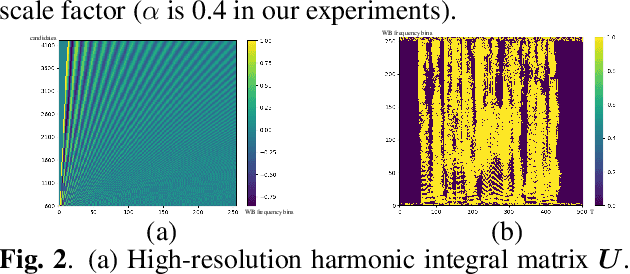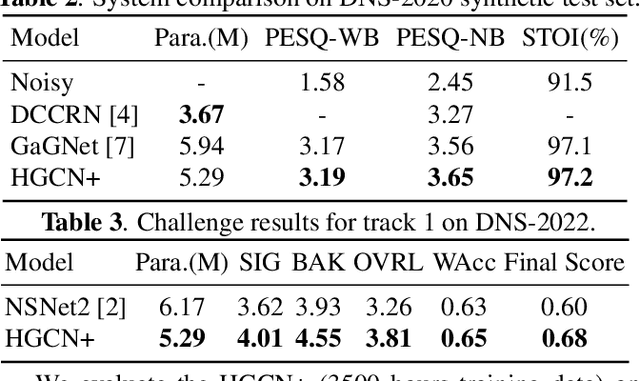Harmonic gated compensation network plus for ICASSP 2022 DNS CHALLENGE
Paper and Code
Feb 25, 2022



The harmonic structure of speech is resistant to noise, but the harmonics may still be partially masked by noise. Therefore, we previously proposed a harmonic gated compensation network (HGCN) to predict the full harmonic locations based on the unmasked harmonics and process the result of a coarse enhancement module to recover the masked harmonics. In addition, the auditory loudness loss function is used to train the network. For the DNS Challenge, we update HGCN with the following aspects, resulting in HGCN+. First, a high-band module is employed to help the model handle full-band signals. Second, cosine is used to model the harmonic structure more accurately. Then, the dual-path encoder and dual-path rnn (DPRNN) are introduced to take full advantage of the features. Finally, a gated residual linear structure replaces the gated convolution in the compensation module to increase the receptive field of frequency. The experimental results show that each updated module brings performance improvement to the model. HGCN+ also outperforms the referenced models on both wide-band and full-band test sets.
 Add to Chrome
Add to Chrome Add to Firefox
Add to Firefox Add to Edge
Add to Edge